<Back to Index>
- Composer and Pianist Julius Reubke, 1834
- Composer and Pianist Charles - Camille Saint - Saëns, 1835
- Composer and Violinist Henryk Wieniawski, 1835
PAGE SPONSOR
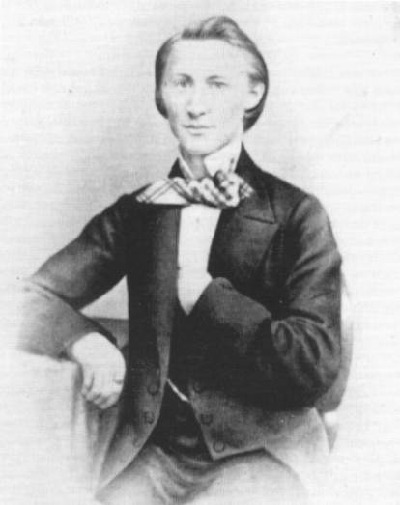
Julius Reubke (March 23, 1834 – June 3, 1858) was a German composer, pianist and organist. In his short life — he died at the age of 24 — he composed the Sonata on the 94th Psalm, in C minor, which was and still is considered one of the greatest organ works in the repertoire.
Born in Hausneindorf, a small village in the region of the Harz Mountains, Julius Reubke was the eldest son of organ and piano builder Adolf Reubke (1805 - 1875). Of Julius's five siblings, two brothers, Emil (1836 - 1884) and Karl (1840 - 1860), worked with their father; Emil became a partner in 1860 and owned the company from 1872. His brother Otto (1842 - 1913) was also a pianist, organist and composer; he prepared the Sonata on the 94th Psalm for its first publication in August 1871. Otto settled in Halle, where he was a professor at the University of Halle, and became its director in 1892. There were also two sisters, Meta and Alma.
Reubke's first musical instruction was in Quedlinburg with Hermann Bönicke (1821 - 1879). He moved to Berlin in April or October 1851, where he continued his musical education at the conservatory there, which had been founded in November 1850 by Theodor Kullak, with whom he studied piano, Adolf Bernhard Marx, with whom he studied composition, and Julius Stern. In Berlin, he encountered the Neudeutsche Schule with conductor Hans von Bülow and organist Alexander Winterberger, both associated with Franz Liszt.
When Liszt visited Berlin in December 1855, he arranged, on the recommendation of Bülow, to teach Reubke piano and composition from February 1856 in Weimar, and allowed him to live at the Altenburg house he kept. It was in this environment that Reubke composed his two major works, the Piano Sonata in B-flat minor, which he composed from December 1856 to March 1857, and the Sonata on the 94th Psalm in C minor, for organ, which he finished a month later; he also considered writing an opera. The organ sonata was dedicated to Professor Carl Riedel; its premiere was by Reubke on the Ladegast organ (1853 - 1855) of Merseburg Cathedral on June 17, 1857. Since its composition, it has been considered one of the pinnacles of the Romantic repertoire.
His health was already in decline at the time of his great compositions:
| “ | Playing us his sonata, seated in his characteristically bowed form at the piano, sunk in his creation, Reubke forgot everything about him; and we then looked at his pale appearance, at the unnatural shine of his gleaming eyes, heard his heavy breath, and were aware of how wordless fatigue overwhelmed him after such hours of excitement. We suspected then that he would not be with us long. | ” |
|
— Richard Pohl
|
He moved to Dresden in December 1857. By this time, he was suffering from worsening tuberculosis, and did not have the energy to play or compose. He moved to the health resort at Pillnitz in May 1858, where he died at the Zum Goldenen Löwen inn a few days later, at the age of 24. He was buried near the church of Maria am Wasser in Pillnitz - Hosterwitz on June 7. Zum Goldenen Löwen housed Vietnamese guest workers in the 1980s and has stood vacant for more than 10 years.
He was one of Liszt's favorite pupils; after his death, he wrote a letter of sympathy to Reubke's father:
| “ | Truly no one could feel more deeply the loss which Art has suffered in your Julius, than the one who has followed with admiring sympathy his noble, constant, and successful strivings in these latter years, and who will ever bear his friendship faithfully in mind | ” |
|
— Franz Liszt |
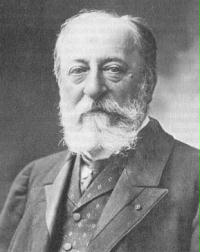
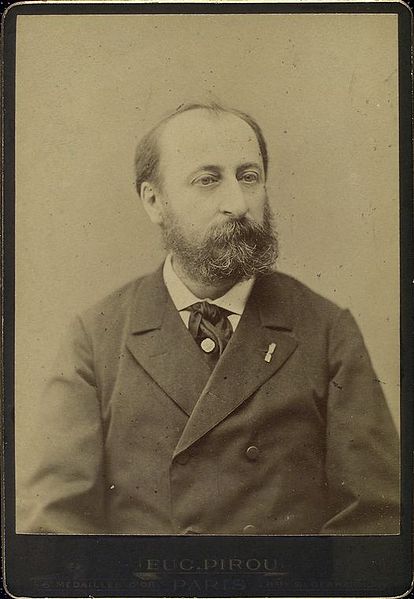
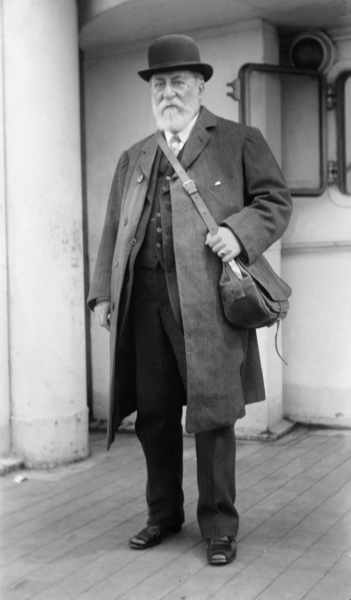
Charles-Camille Saint-Saëns (9 October 1835 – 16 December 1921) was a French Late Romantic composer, organist, conductor, and pianist. He is known especially for The Carnival of the Animals, Danse macabre, Samson and Delilah, Piano Concerto No. 2, Cello Concerto No. 1, Havanaise, Introduction and Rondo Capriccioso, and his Symphony No. 3 (Organ Symphony).
Saint - Saëns was born in Paris, France, on 9 October 1835. His father, a government clerk, died three months after his birth. He was raised by his mother, Clémence, with the assistance of her aunt, Charlotte Masson, who moved in. Masson introduced Saint - Saëns to the piano, and began giving him lessons on the instrument. At about this time, age two, Saint - Saëns was found to possess perfect pitch. His first composition, a little piece for the piano dated 22 March 1839, is now kept in the Bibliothèque nationale de France. Saint - Saëns's precocity was not limited to music. He learned to read and write by age three, and had some mastery of Latin by the age of seven. His first public concert appearance occurred when he was five years old, when he accompanied a Beethoven violin sonata. He went on to begin in-depth study of the full score of Don Giovanni. In 1842, Saint - Saëns began piano lessons with Camille - Marie Stamaty, a pupil of Friedrich Kalkbrenner, who had his students play the piano while resting their forearms on a bar situated in front of the keyboard, so that all the pianist's power came from the hands and fingers but not the arms. At ten years of age, Saint - Saëns gave his debut public recital at the Salle Pleyel, with a performance of Mozart's Piano Concerto No. 15 in B-flat major (K. 450), and various pieces by Handel, Kalkbrenner, Hummel, and Bach. As an encore, Saint - Saëns offered to play any of Beethoven's 32 piano sonatas from memory. Word of this incredible concert spread across Europe, and as far as the United States with an article in a Boston newspaper.
He then studied composition under Fromental Halévy at the
Conservatoire de Paris. Saint - Saëns won many top prizes and
gained a reputation that resulted in his introduction to Franz Liszt,
who would become one of his closest friends. At the age of sixteen,
Saint - Saëns wrote his first symphony; his second, published as Symphony No. 1 in E-flat major,
was performed in 1853 to the astonishment of many critics and fellow
composers. Hector Berlioz, who also became a good friend, famously
remarked, Il sait tout, mais il manque d'inexpérience ("He knows everything, but lacks inexperience").
For income, Saint - Saëns played the organ at various churches in Paris, with his first appointment being at the Saint - Merri in the Beaubourg area. In 1857, he replaced Lefébure - Wely at the eminent position of organist at the Église de la Madeleine, which he kept until 1877. His weekly improvisations stunned the Parisian public and earned Liszt's 1866 observation that Saint - Saëns was the greatest organist in the world. He also composed a famous piece called Danse Macabre at this time.
From 1861 to 1865, Saint - Saëns held his only teaching position as professor of piano at the École Niedermeyer, where he raised eyebrows by including contemporary music — Liszt, Gounod, Schumann, Berlioz, and Wagner — along with the school's otherwise conservative curriculum of Bach and Mozart. His most successful students at the Niedermeyer were André Messager and Gabriel Fauré, who was Saint - Saëns's favorite pupil and soon his closest friend.
Saint - Saëns was a multi-faceted intellectual. From an early age, he studied geology, archaeology, botany, and lepidoptery. He was an expert at mathematics. Later, in addition to composing, performing, and writing musical criticism, he held discussions with Europe's finest scientists and wrote scholarly articles on acoustics, occult sciences, Roman theater decoration and ancient instruments. He wrote a philosophical work, Problèmes et mystères, which spoke of science and art replacing religion; Saint - Saëns's pessimistic and atheistic ideas foreshadowed Existentialism. Other literary achievements included Rimes familières, a volume of poetry, and La crampe des écrivains, a successful farcical play. He was also a member of the Astronomical Society of France; he gave lectures on mirages, had a telescope made to his own specifications and even planned concerts to correspond to astronomical events such as solar eclipses.
In 1870, the Franco - Prussian War, despite being over in barely six months, left an indelible mark on the composer. He was relieved from fighting duty as one of the favorites of a relative of emperor Napoleon III, but fled nonetheless to London for several months when the Paris Commune broke out in the besieged Paris of winter 1871, his fame and societal status posing a threat to his survival. In the same year, he co-founded with Romain Bussine the Société Nationale de Musique in order to promote a new and specifically French music. After the fall of the Paris Commune, the Society premiered works by members such as Fauré, César Franck, Édouard Lalo, and Saint - Saëns himself, who served as the society's co-president. In this way, Saint-Saëns became a powerful figure in shaping the future of French music.
In 1875, nearing forty, Saint - Saëns married Marie Laure Emile Truffot, who was just 19. They had two sons, both of whom died in 1878, within six weeks of each other, one from an illness, the other upon falling out of a fourth story window. For the latter death Saint - Saëns blamed his wife, and when they went on vacation together in 1881 he simply disappeared one day. A separation order was enacted, but they never divorced.
From 1877 to 1889, he lived at 14, rue Monsieur - le - Prince, and the apartment house is marked by a plaque.
In 1886 Saint - Saëns debuted two of his most renowned compositions: The Carnival of the Animals and Symphony No. 3, dedicated to Franz Liszt, who died that year. That same year, however, Vincent d'Indy and his allies had Saint - Saëns removed from the Société Nationale de Musique. Two years later, Saint - Saëns's mother died, driving the mourning composer away from France to the Canary Islands under the alias "Sannois". Over the next several years he traveled around the world, visiting exotic locations in Europe, North Africa, Southeast Asia, and South America. Saint - Saëns chronicled his travels in many popular books using his nom de plume, Sannois.
In 1908, he had the distinction of being the first celebrated composer to write a musical score to a motion picture, The Assassination of the Duke of Guise (L'assassinat du duc de Guise), directed by Charles Le Bargy and André Calmettes, adapted by Henri Lavedan, featuring actors of the Comédie Française. It was 18 minutes long, a considerable run time for the day.
In 1915, Saint - Saëns traveled to San Francisco and guest conducted the San Francisco Symphony Orchestra during the Panama - Pacific International Exposition, one of two world's fairs celebrating the completion of the Panama Canal.
Saint - Saëns continued to write on musical, scientific and historical topics, traveling frequently before spending his last years in Algiers, Algeria. In recognition of his accomplishments, the government of France awarded him the Grand Cross of the Légion d'honneur. A street in Paris and in Marseilles is named in his honor.
Saint - Saëns died of pneumonia on 16 December 1921 at the Hôtel de l'Oasis in Algiers. His body was repatriated to Paris, honored by state funeral at La Madeleine, and interred at Cimetière du Montparnasse in Paris.
Saint - Saëns was either friend or enemy to some of Europe's most distinguished musicians. He stayed close to Franz Liszt and maintained a fast friendship with his pupil Gabriel Fauré, who replaced him as organist and choirmaster when he retired. Additionally, he was a teacher and friend to Isidor Philipp, who headed the piano department at the Paris Conservatory for several decades and was a composer and editor of the music of many composers. But despite his strong advocacy of French music, Saint - Saëns openly despised many of his fellow composers in France such as Franck and d'Indy, and while he praises the musical genius of Jules Massenet in his 1919 book Musical Memories, he also states pointedly in the same chapter that he had no use for Massenet personally. Saint - Saëns also hated the music of Claude Debussy; he is reported to have told Pierre Lalo, music critic, and son of composer Édouard Lalo, "I have stayed in Paris to speak ill of Pelléas et Mélisande." The personal animosity was mutual; Debussy quipped: "I have a horror of sentimentality, and I cannot forget that its name is Saint - Saëns." On other occasions, however, Debussy acknowledged an admiration for Saint - Saëns's musical talents.
Saint - Saëns had been an early champion of Richard Wagner's music in France, teaching his pieces during his tenure at the École Niedermeyer and premiering the March from Tannhäuser. He had stunned even Wagner himself when he sight read the entire orchestral scores of Lohengrin, Tristan und Isolde, and Siegfried, prompting Hans von Bülow to refer to him as "the greatest musical mind" of the era. However, despite admitting appreciation for the power of Wagner's work, Saint - Saëns defiantly stated that he was not an aficionado. In 1886, Saint - Saëns was punished for some particularly harsh and anti - German comments on the Paris production of Lohengrin by losing engagements and receiving negative reviews throughout Germany. Later, after World War I, Saint - Saëns angered both French and Germans with his inflammatory articles titled Germanophilie, which ruthlessly attacked Wagner.
Saint - Saëns edited Jean - Philippe Rameau's Pièces de clavecin, and published them in 1895 through Durand in Paris (re-printed by Dover in 1993).
According to an unconfirmed anecdote, Saint - Saëns stormed out of the première of Igor Stravinsky's Le sacre du printemps (The Rite of Spring) on 29 May 1913, allegedly infuriated over what he considered the misuse of the bassoon in the ballet's opening bars.
Saint - Saëns began his musical career as a musical pioneer, introducing to France the symphonic poem and championing the radical works of Liszt and Wagner at a time when Bach and Mozart were the norms. By the dawn of the 20th century, Saint - Saëns was an ultra - conservative, fighting the influence of Debussy and Richard Strauss while defending the reputations of Meyerbeer and Berlioz. This is hardly surprising — Saint - Saëns's career began while Chopin and Mendelssohn were in their prime, and ended at the commencement of the Jazz Age; but his image endured for years after his death.
As a composer, Saint - Saëns was often criticized for his refusal to
embrace romanticism and at the same time, rather paradoxically, for his
adherence to the conventions of 19th century musical language. He is
remembered chiefly for works such as The Carnival of the Animals,
which was not published in full until after his death – reportedly
because Saint - Saëns feared it would affect his reputation as a serious
composer; the Introduction and Rondo Capriccioso for violin and orchestra, the operas Samson and Delilah and Henry VIII (of which only the first is frequently performed today), the symphonic poem Danse Macabre, the Symphony No. 3;
the second, fourth and fifth piano concertos; the third violin
concerto; the first cello concerto; and the first violin sonata.
What gives Sebastian Bach and Mozart a place apart is that these two great expressive composers never sacrificed form to expression. As high as their expression may soar, their musical form remains supreme and all - sufficient.
— Camille Saint - Saëns, from a letter to Camille Bellaigue, 1907
Saint - Saëns' concertos and many of his chamber music works are both technically difficult and transparent, requiring the skills of a virtuoso. The later chamber music pieces, such as the second violin sonata, the second cello sonata, and the second piano trio, are less accessible to a listener than earlier pieces in the same form. They were composed and performed when Saint - Saëns was already slipping out of popularity and, as a result, they are little known. They show a willingness to experiment with more progressive musical language and to abandon lyricism and charm for more profound expression.
The piano music, while not as deep or as challenging as that of some of his contemporaries, occupies the stylistic ground between Liszt and Ravel. At times brilliant, transparent and idiomatic, the music for two pianos includes the Variations on a Theme by Beethoven, the Scherzo, a palindromic piece that uses a blend of modern tonalities and conventional gestures, and the Caprice arabe, a rhythmically inventive fantasy that pays homage to the music of northern Africa. Although Saint - Saëns was considered old fashioned in later life, he explored many new forms and reinvigorated some older ones. His compositional approach was inspired by French classicism, which makes him an important forerunner of the neoclassicism of Ravel and others.
In performance, Saint - Saëns is said to have been "unequaled on the organ", and rivaled by only a few on the piano. However, Saint - Saëns's concert style was restrained, subtle, and cool; he sat unmoving at the piano. His playing was marked by extraordinarily even scales and passagework, great speed, and aristocratic refinement. The recordings he left at the end of his life give glimpses of these traits.
He was, incidentally, the earliest born pianist ever to make recordings. But he was not the earliest born pianist to leave a record in any form of their piano playing, as Carl Reinecke, who was born in 1824 (eleven years before Saint - Saëns, and while Beethoven was still alive), made a Welte - Mignon roll in 1904, when he was 80. Nor was he the first pianist to make recordings; an arrangement of the Liebestod from Wagner's Tristan und Isolde was made by Landon Ronald in 1900 on a seven - inch Berliner disc.
He was often charged with being unemotional and business like, less memorable than other more charismatic performers. He was probably the first pianist to publicly perform a cycle of all the Mozart piano concertos. In some cases these influenced his own piano concertos; for example, the first movement of his 4th Piano Concerto in C minor strongly resembles the last movement of Mozart's 24th Concerto, which is in the same key. In turn, his own concertos appear to have influenced those of Sergei Rachmaninoff and other later Romantic composers. Throughout his life, Saint - Saëns continued to play with the technique taught to him by Stamaty, using the strength of the hand rather than the arm. Claudio Arrau never forgot the ease with which Saint - Saëns played (he cites Chopin's fourth scherzo as an example).
Saint-Saëns's early start and his long life provided him with time to
write hundreds of compositions; during his career, he wrote many
dramatic works, including four symphonic poems, and thirteen operas, of which Samson et Dalila and the symphonic poem Danse macabre
are among his most famous. In all, he composed over 300 works and was
the first major composer to write music specifically for the cinema, for
Henri Lavedan's film The Assassination of the Duke of Guise (Op. 128, 1908).
Saint - Saëns wrote five symphonies, although only three of these are numbered. He withdrew the first, written for a Mozartian scale orchestra, and the third, a competition piece. His symphonies are a significant contribution to the genre during a period when the French symphonic tradition was otherwise in decline. Saint - Saëns also contributed voluminously to the French concertante literature; he wrote five piano concertos, three violin concertos, two cello concertos, and about twenty smaller concertante works for soloist and orchestra, including a colorfully orchestrated piano fantasy, Africa; the Havanaise and the Introduction and Rondo capriccioso for violin and orchestra; and the Morceau de concert for harp and orchestra. Of the concertos, the Second Piano concerto is one of the most popular of virtuoso piano concertos, and the Third Violin Concerto and First Cello Concerto also remain popular.
In 1886, he wrote his final symphony, the Symphony No. 3, avec orgue (with organ), one of his best known works. The motif of the third became the inspiration for the 1978 song If I Had Words by Scott Fitzgerald and Yvonne Keeley. Aided by the monumental symphonic organs built in France by Aristide Cavaillé - Coll, at that time the world's foremost organ builder, this work demonstrates the spirit of "gigantism" and the confidence of France in the Belle Époque at the end of the 19th century, a period that produced the Eiffel Tower, the Universal Exposition at Paris. The confident Maestoso fourth movement perhaps reflects the confidence of Europe in its technology, its science, its "age of reason". He was frequently named as "the most German of all the French composers", perhaps due to his use of counterpoint.
Also in 1886, Saint - Saëns completed The Carnival of the Animals, which was first performed privately on 9 March. In contrast with the work's later popularity, Saint - Saëns forbade complete performances of it shortly after its première, allowing only one movement, Le cygne (The Swan) for cello and two pianos, to be published in his lifetime. Carnival was written as a musical jest, and Saint - Saëns believed it would damage his reputation as a serious composer. In fact, since its posthumous publication, this work's imagination and musical brilliance have impressed listeners and critics. In 1950, poet Ogden Nash wrote verses to introduce the various movements and these have sometimes been used in concerts and recordings of the music.
Saint - Saëns also wrote six preludes and fugues for organ, three in Op. 99 and three in Op. 109, of which Op. 99, no. 3 in E flat major is most often performed.
The opera Hélène was composed by Saint - Saëns for the great Australian soprano, Dame Nellie Melba, in 1904. Unstaged after its premiere in Monaco, it was performed in the soprano's home city (Melbourne) during January 2008.
One of Saint - Saëns's symphonic poems, Le rouet d'Omphale, Op.
31, became famous to a new generation of listeners beginning in 1937
through its use of the ominous middle section of it as the theme to the
long running radio program, The Shadow.
Although Saint - Saëns was thought by some to be ethnically
Jewish,(e.g., by Tchaikovsky) his father was 'descended from a Norman
agricultural family'. W.L. Hubbard lists Saint - Saëns as being of
Jewish descent.
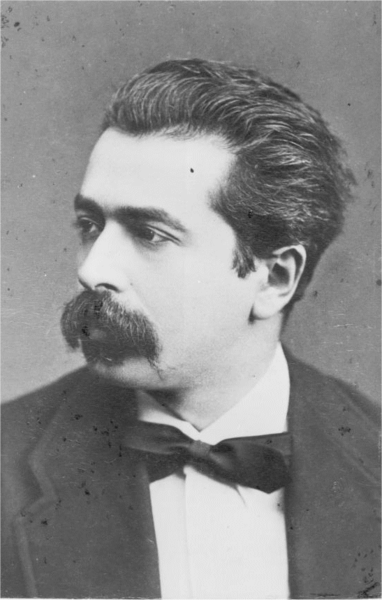
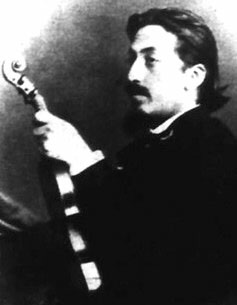
Henryk Wieniawski (10 July 1835 – 31 March 1880) was a Polish violinist and composer.
Henryk Wieniawski was born in Lublin, Congress Poland, Russian Empire. His father, Tobiasz Pietruszka, had converted to Catholicism. His talent for playing the violin was recognized early, and in 1843 he entered the Paris Conservatoire. After graduation, Wieniawski toured extensively and gave many recitals, where he was often accompanied by his brother Józef on piano. In 1847, Henryk Wieniawski published his first opus, a Grand Caprice Fantastique, the start of a modest but important catalog of 24 opus numbers.
When his engagement to Isabella Hampton was opposed by her parents, Wieniawski wrote Légende, Op. 17; this work helped the parents change their mind, and the couple married in 1860.
At the invitation of Anton Rubinstein, Wieniawski moved to St. Petersburg, where he lived from 1860 to 1872, taught many violin students, and led the Russian Musical Society's orchestra and string quartet. From 1872 to 1874, Wieniawski toured the United States with Rubinstein. Wieniawski replaced Henri Vieuxtemps as violin professor at the Conservatoire Royal de Bruxelles in 1875.
During his residence in Brussels, Wieniawski's health declined, and he often had to stop in the middle of concerts. He started a tour of Russia in 1879 but was unable to complete it. He was taken to a hospital in Odessa after a concert. On 14 February 1880, Tchaikovsky's patroness Nadezhda von Meck took him into her home and provided him with medical attention. His friends also arranged a benefit concert to help provide for his family. He died in Moscow a few weeks later from a heart attack and was interred in the Powązki Cemetery in Warsaw.
His daughter Régine Wieniawski, born in Brussels the year before his death, also became a composer. She published her early works as "Irène Wieniawska," but after marrying Sir Aubrey Dean Paul and becoming a British subject, she used the pseudonym "Poldowski."
Wieniawski was a player in the Beethoven Quartet Society in London where he also performed on viola.
Henryk Wieniawski was considered a violinist of genius and wrote some of the most important works in the violin repertoire, including two extremely difficult violin concertos, the second of which (in D minor, 1862) is more often performed than the first (in F♯ minor, 1853). His "L'Ecole Moderne, 10 Etudes - Caprices" is a very well known and required work for aspiring violinists. His Scherzo - Tarantelle, Op. 16 and Légende, Op. 17 are also frequently performed works. He also wrote two popular mazurkas for solo violin and piano accompaniment (the second one, Obertas, in G Major), using techniques such as left - hand pizzicato, harmonics, large leaps, and many double stops. Wieniawski has been given a number of posthumous honors. His portrait appeared on a postage stamp of Poland in 1952 and again in 1957. A 100 Złoty coin was issued in 1979 bearing his image.
What is sometimes called the "Russian bow grip" ought to be called the "Wieniawski bow grip": Wieniawski taught his students his own kind of very stiff bowing that allowed him to play a "devil's staccato" with ease. This "devil's staccato" was easily used to discipline students.
The first violin competition named after Wieniawski took place in Warsaw in 1935. Ginette Neveu took first prize, David Oistrakh second, and Henri Temianka third. The International Henryk Wieniawski Violin Competition has been held every five years since 1952.